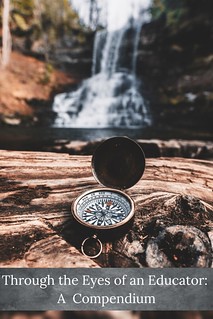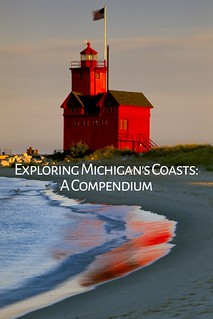Cultural Holidays: From St. Nicholas to La Befana and everything in between!
The holidays are already a special time of year; when you add in all the cultural components and traditions that we hold onto through our families that have been passed down through generations, it adds something rather special to the holidays…because it’s filled with deep meaning.

I grew up in a Greek and Italian-American family, and for us, the holidays always began from decorating our homes and Christmas trees the day after Thanksgiving. December 6 has always been a special day, as well, because we celebrate St. Nicholas Day. My dad’s name is Nicholas, and my sister’s name is Nicoletta, and the day was always recognized to honor St. Nicholas—in the Greek culture, we give little gifts for “name day” traditions. St. Nicholas was a bishop who was known for his good deeds and helping the needy and children. He was known for his generosity, especially to children. He cared about the well-being of people, and inspired today’s Santa Claus.
There are countless stories of St. Nicholas helping others. One example tells of a widowed man who was old, poor, and had three daughters. He had no money for dowries; his daughters would’ve been sold into slavery or prostitution when he died. One night, while everybody was sleeping, St. Nicholas rode past the family’s home and flung a red velvet bag filled with coins into the window of the old man’s home. This red velvet bag later became the motivation behind today’s Christmas stocking. The father heard the noise and saw Nicholas riding off, and he spent the rest of his life praising God for sending Nicholas to them.
There are many fun St. Nicholas Day traditions, but one that we honor to this day is put out a big shoe and put it in front of either the fireplace or by the Christmas tree. The shoe is filled with small gifts like little chocolates that look like St. Nicholas or Santas, little oranges or clementines, chocolate coins, candy, and even money. The little oranges always represented the gold that St. Nicholas would give away to those in need. In some countries in Europe, such as Germany and Austria, St. Nicholas is accompanied by his counterpart, Krampus, who leaves coal for misbehaving children.
Children are always encouraged to participate in acts of kindness to stay off the naughty list. My husband and I used to attend a Russian Orthodox church for many years when we lived in Michigan and again in Pennsylvania when we moved, and every December 6, St. Nicholas would come to greet the children with hugs and treats during fellowship after church. He was dressed in red with a bishop’s hat and a long cane. Cookies were always made for the special occasion, from the traditional gingerbread to the savory sugar cookies for all to enjoy. There was always a differentiation between St. Nicholas and Santa Claus. We are teaching our children the difference, as well.

St. Nicholas Day shoe filled with candy, chocolates, and little clementines
St. Nicholas is an inspiration for performing acts of kindness, generosity and friendship—all things the holidays can bring out the best in people. This can be fun to do!
Here are some examples:
• bake cookies for the local fire or police departments
• sponsor children from the angel trees at local coffee shops or other businesses to help them have a good Christmas
• donate clothes and other items
• pay for someone else’s meal or drinks in the drive-thru line at a fast-food restaurant
• anonymously pay for children school lunches or a utility bill of someone who is struggling
• buy a bunch of $5-10 gift cards from McDonalds to give to people who are begging on the street so they can order something to fill their bellies
• Create bags for unhoused persons, filled with socks, flannel PJs, toothbrushes and toothpaste, and other items
• Offer to help serve food at a Meals on Wheels location or at a soup kitchen
There are numerous ways to help others. The holidays are such a wonderful time to help others…and it makes us feel good!
Giving is contagious; there’s something about giving and helping that boosts our mood and creates the “jolly-ness” of the holidays.
St. Nicholas was always one of my favorite saints and he is the patron saint of children, bakers, brides, unmarried women, grooms, sailors, and travelers. When I was pregnant with my son, we decided to wait to announce our pregnancy intentionally on St. Nicholas Day—we truly believed he would help our baby and for me to have a healthy pregnancy…and my son is a healthy baby boy! Being a Greek-American, I of course know many people named after this wonderful saint and for good reason. So, kicking off the holidays with St. Nicholas always starts off the holidays in my family and in the right way: thinking of others and being helpful in any way we can.
For many people around the world, December 8 is just as important as Christmas, if not more, with the Feast of the Immaculate Conception of the Virgin Mary. In varying parts of the world, including Italy and Mexico, the day is marked by honoring the Virgin Mary through processions, parades, and attending church services.
Next is St. Lucia Day celebrated on December 13. Legend says that she brought food to Christians while wearing a candlelit wreath on her head to light her way. My mother, being of Italian descent, would sometimes bake a special bread for this day. St. Lucia is also celebrated in Scandinavian countries with electing their own St. Lucia’s in different towns, having festivals with processions of young girls dressed in white and wearing lighted wreaths on their heads.
This is an inspiring way to start the Christmas off when it’s the darkest time of the year; it brings so much light and hope to all. Families observe St. Lucia by having an elder daughter serve baked goods and coffee to family members, neighbors, and friends.

Saffron buns for Lucia (Saint Lucy's Day). Wikimedia Commons: Craig More
Throughout the month of December and leading up to Christmas Eve, decorating our houses with Christmas trees and lights is expected. Growing up, our Greek dance troop would practice the tradition of Kalanda, or Greek Christmas carols. I remember going to dozens of our parishioners’ houses to sing and visit, enjoying sweets and hot chocolates along the way. A tradition in Greece that’s still very popular is decorating the boats near the Greek villages. Greek wives and children would historically decorate the wooden boats to welcome their husbands and sons back from the sea, safe from harm.

Christmas cookie platter that the author’s daughter makes every year!
I personally have the biggest sweet tooth of anyone I know. No matter where I go or where I travel, I’m always looking for local bakeries or a delicacy to try. It was my own personal luck that my mother used to own her own baking business, and for Christmas she would make dozens upon dozens of Greek and Italian pastries, cookies, and other sweets! To this day, she still makes trays of cookies that include Koulouria (dunkable braided cookies), baklava, thumb prints, brownies, buckeyes, mini-cheesecakes, traditional chocolate chips, walnut tassies, peanut blossoms, nut rolls, kourambiethes (a melt-in-your-mouth powdered sugar cookie), and even some Italian favorites like pizzelles of different flavors and Italian Christmas cookies with sprinkles.
Is it even Christmas without Christmas cookies?
This is something cultures around the world have fun with and it’s exciting to attend cookie exchanges that showcase special Christmas offerings from gingerbread, shortbread, and macarons to beautiful Linzer cookies that are just so lovely! In addition to creating our own baking delights or going to cookie exchanges with friends, something that also seems important is having savory chocolates to offer to company who come by the house. Growing up, we always got chocolate foil balls and chocolate Santas, and I continue that tradition in my own home, except sometimes I also add in my favorite Greek chocolates: noisette chocolate-covered hazelnuts! My wonderful godmother would get me these chocolates when returning from her Greece travels, and when I finally got to visit Greece myself, I bought many bags of these to enjoy with family and friends. Luckily, they are also easy to find in cultural grocery stores or online.
Cookie trays can also have dipped chocolates, too, so there were times that I would dip pretzels, Oreos, and other things into chocolate to add to my own cookie trays. It’s much easier to visit local chocolate shops, though! I remember being in Europe for Christmas one year while studying abroad, and I sincerely enjoyed all the chocolates and sweets of each place I went to, from Rome to Paris to Amsterdam and Germany. This is how I became a chocolate snob, because having good chocolate matters!
For many families, it’s a tradition to attend a Christmas play, concert, musical, or even the world-famous The Nutcracker ballet, featuring music by Tchaikovsky. When I was engaged to my husband, that first Christmas together, we spent it watching The Nutcracker. One year, our daughter, who was five years old at the time and taking dance lessons, wanted to see the famous ballet. We gifted her front row seats that particular year as part of her Christmas present. To this day, my husband and I both say that was the most meaningful time to have seen it, because it meant so much to her. It was incredible to watch her reactions as she embraced the story and music (and constantly talking her down from getting up to dance—a memory we love telling her about!); we have come to love The Nutcracker ballet, and mostly because of our daughter. We gifted her a set of the principal dancer’s ballerina slippers that night as a keepsake from that first time viewing the ballet together. Every year, we look forward to enjoying the music, movies, plays, and musicals of the season! It’s such a wonderful way to enjoy the holidays and adds something special to the season.

The author’s daughter when she was 5 years old, during intermission (masks were worn because of Covid); she absolutely loved the Nutcracker!
I married into a Mexican family, and my husband’s family in Mexico still celebrates Las Posadas, a nine-day celebration starting on December 16 through December 24 that commemorates the journey that Joseph and Mary made from Nazareth to Bethlehem in search of the birth of the baby Jesus. This is very similar to La Novena in Italy, which marks the journey of the three wise men on their way to visit the baby Jesus. In Italy, it’s customary for children to go door to door dressed as the Magi, collecting sweets in return for carols and poems. In Mexico, there are festivals during this time that have a child dressed as an angel and leading a procession through the streets of the town. Other children join in the procession, dressed in silver and gold robes carrying lit candles with images of the Virgin Mary and Joseph riding on a donkey. Adults and musicians follow the procession and visit selected homes to ask for lodging for Mary and Joseph. Hosts refuse lodging, as that is customary with the nativity story, but provide refreshments with each stop, sharing passages from Scripture; Christmas carols are sung.
Posada parties take place at a different home each night. It’s also a fun tradition that after mass is held on the last day, children break open pinatas filled with candy, toys, and sometimes money. The pinatas are traditionally crafted in the form of the Star of Bethlehem. Nativity scenes are popular in Mexico and Italy. We are lucky to have a beautiful (but breakable!) Nativity from Mexico. We typically set it up in the china closet, away from children or pets who could break it. My husband recollects that Christmas Day was usually attending mass and having a meal with family. Any gifts were provided by the Three Kings on January 6.

Children in Oaxaca, Mexico celebrate Las Posadas by breaking a Piñata. Wikimedia Commons: Nsaum75
Christmas Eve, celebrated on December 24, is special. There’s a buildup of excitement from children in the family knowing that in a few short hours, the crescendo that is Christmas will be taking place! Many cultures around the world place a big emphasis on Christmas Eve. We always went to church, where luminaries doned the walkways and stairs of the church. After church, we always go see Christmas lights locally around neighborhoods. When I was little, my mom would be in the kitchen making dish after dish for our Feast of the Seven Fishes, from bacalao to pasta dishes with seafood, fried calamari, clams, and octopus. I admit, it was personally never my favorite since I’m not a huge fan of seafood, but my husband absolutely loves it. He enjoys the shrimp and fish dishes, and everything that could ever be served. Our daughter loves it, too. It was always customary for us kids growing up to open one present on Christmas Eve. It was more about being together as a family and enjoying our blessings over a good meal. Nowadays, Christmas Eve includes watching A Christmas Story movie, reading the ‘Twas the Night Before Christmas poem to our children, and getting ready for Santa Claus’ big arrival.
Christmas Day is celebrated on December 25 to honor the birth of Jesus. In my home, we always went to church and then opened presents while dinner cooked in the kitchen. We all enjoyed Greek or Italian food growing up. Christmas was always a huge feast, and included ham, turkey, Greek potatoes, salad, pastitsio, spanakopita, dolmathes, lasagna, endless amounts of cookies, chocolate covered treats, and coffee. The year after I came back from studying abroad in Italy, I stopped at a local Italian grocery store here in Pittsburgh, where I could buy select panettone and my favorite kinder bueno chocolates. My husband grew up eating turkey, bacalao, pork leg, romeros with mole and shrimp, fruit ponche, and other Mexican dishes. In our modern-day family, after dinner and dessert, we always would watch a Christmas movie together or play bingo or other games, if there was time. Prizes for bingo and other games would be scratch lottery tickets or the treats we already had in the house. Of course, every family spends the holiday a bit differently, but I’m sharing how we did it in my family. It was always an enjoyable time and made me feel so thankful for all that we shared together and had as a family.

Christmas at the author’s parents’ house in 2023; She was pregnant with her son, who is now 8 months old!
The week after Christmas is always spent shopping, eating leftovers, and connecting with family and friends from near and far. I grew up with the New Year’s Day tradition of Vasilopita bread. Some people make a cake or even a pie with it in Greece. The fun part about this cake is that there’s a hidden coin somewhere inside the bread. If you get the slice with it inside, you are said to have good luck for the year. Now, as a child, all I wanted was the coin.
In Italy, a popular new year’s dish is eating pork and lentils. The lentils look like tiny coins and are said to bring prosperity, while the pork represents life’s fullness and richness to come. My mom always made a pork roast with sauerkraut for our pork dish. I always enjoyed banging on pots and pans growing up to ‘ring in’ the new year, and when I was younger, eating a Belgian waffle breakfast with the family. New year’s resolutions were always something to reflect on for growth over the years, but I personally enjoyed looking at all the fireworks from around the world. My husband and children and I like being home for New Year’s Eve, making and eating food, playing video games, and then counting down to midnight. New year’s day was spent in a sleepy slumber but again, with family doing what Mediterranean and Hispanic families do best: entertain and eat!

Vasilopita Bread
Towards the end of the month-long holiday season is the celebration of Epiphany, which is when the Magi (or Three Kings) visited the baby Jesus. There was always the celebration of La Befana, the Italian “Christmas Witch," on my Italian-side, too. La Befana is the tale of an old woman or witch-like figure (as she’s always pictured with a broomstick) who visits children across Italy looking for the Christ child. She is most definitely a "good witch." According to the legend, La Befana was sweeping the floor of her house and glanced out of the window to see a bright star in the night sky. Not paying any mind to it, she was then paid a visit from the Three Kings. They asked Befana for directions, and told her they were following the star in the sky with intent to bring gifts to the newborn baby. They invited her to join them. She declined their invitation, as she was too reluctant to leave her work unfinished. After the Three Kings left, she had a change of heart and wanted to try to catch up with the Magi to honor the baby Jesus, too. She set out with her broom in hand and a basket filled with small gifts. Everywhere she stopped to inquire about the baby Jesus, she gifted children along the way with a small gift of fruit or candy—or coal for naughty children. I grew up with the tradition that La Befana only left three presents, each representing the gifts of the Magi.

La Befana left the author’s daughter money and gifts on January 6!
In the Greek culture, locationally Tarpon Springs, Florida, the annual epiphany celebration includes the throwing of the cross by an archbishop in the Spring Bayou. Young men dive into the water to race to retrieve it. This year will be the 118th time this will be happening at St. Nicholas Greek Orthodox Cathedral and Spring Bayou. I personally have never witnessed this, but have family in the area, so I hope one day to visit and experience this.
Epiphany is also the “blessing of the waters,” so in our church, everyone receives holy water to take home with them. January is also a tradition when our priest visits parishioners to bless their homes and families. I personally feel good about this as a Greek Orthodox Christian, as we believe it protects our homes spiritually from negative energy and spirits.

Boys Competing in Contest to Retrieve an Epiphany Cross-Tarpon Springs, Florida. Wikimedia Commons: Florida Memory
My husband has a very similar tradition for January 6, called Dia de Reyes Magos, or Day of the Magi Kings (or Three Kings Day!). My husband didn’t grow up with Santa Claus. As his dad comedically would say to him, he was never “a client of this gentleman.” What he did celebrate was Three Kings Day with family, food, and gifts! Letters would be written to the Magi and even a special cake was bought called Rosca de Reyes, or Kings Cake. Inside the cake are figurines of the baby Jesus. Whoever gets a baby Jesus is said to invite those around them to a meal of tamales held on February 2, the Candlemas Day, which is a day that celebrates the Virgin Mary. When my husband and I lived in Michigan, one of his cousins held a Rosca de Reyes party. I wish I would’ve taken pictures of how large that cake truly was and the little plastic baby Jesuses baked inside of it. I was so curious about the tradition, as we were just newlyweds at the time, which was over 13 years ago! I was so excited to be a part of it. I got a baby Jesus but had no idea, at the time, how to make tamales.

Rosca de Reyes Bread
On January 7, we celebrate Orthodox Christmas from the Julian calendar, and the feast of St. John the Baptist. Typically, we would attend church—and in one of our former parishes where St. John the Baptist was the patron saint of the church, the church would have a celebration after the service in the church hall with food and fellowship. When my youngest brother, who happens to be named John, was little, we always gave him a toy for his name day. January 7 was the end of the full holidays for us. It was always sad, because after we took down all the Christmas cards taped to the wall, the Christmas lights and tree, and all the other decorations, the house always felt so empty. There really is a special joy about this holiday and a warmth to it that we loved and celebrated.
I absolutely cherish all the traditions of my family and my husband’s family. There are so many other things I didn’t even mention, like how special our Christmas tree is to me because every ornament has deep meaning. The birds that were on our wedding cake are on our tree; that’s obviously not cultural, but something I cherish. Over the years, while we kept some of our old traditions that we love, we also have made new ones since having children of our own. It’s always a time of year we look forward to and warms our hearts with food, family, and friendship along the way. It’s the giving season and a time to reflect and think of others.
I’m wishing you and your loved ones the absolutely best Christmas holidays! Merry Christmas, Kala Xpistouyenna, Buon Natale, Feliz Navidad! I know there are so many ways to say this in many languages and I wish I knew all of them. Have a wonderful 2025 to all!

The author with her family for Christmas 2024
Stasia Lopez is the Global Education Editor for Wandering Educators and is also a Faculty Instructor and Director of Career Development at the University of Pittsburgh. She serves as the Co-President of the Career Counselors’ Consortium. She graduated with her Master’s degree in Educational Leadership in Higher Education and Student Affairs from Western Michigan University and earned her Bachelor of Science in Business Administration degree in Hospitality and Tourism Management from Robert Morris University. Stasia is passionate about international education, travel, college to career topics, and loves working on a college campus. She’s lived in four different U.S. states (Florida, Michigan, South Carolina, and Pennsylvania) and also studied and lived abroad in Rome, Italy. Stasia lives in the Pittsburgh area with her husband, children, and fluffy black cat.
Additional resources:
St. Nicholas Day 2024 | Who Was the Real St. Nicholas? | The Old Farmer's Almanac
St. Lucia’s Day | History, Traditions, & Facts | Britannica
Kourambiethes | Greek Christmas Cookies | Greek Food Blog
Christmas Traditions in Greece
How The Nutcracker became the most popular ballet in the world | The Independent
Las Posadas | Meaning, Christmas, Mexico, Traditions, & Facts | Britannica
Christmas in Mexico - WhyChristmas.com
Orthodox Christmas: Why do some people celebrate Christmas on 7 January - BBC Newsround




















